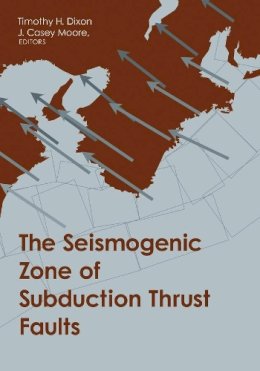
Stock image for illustration purposes only - book cover, edition or condition may vary.
Seismogenic Zone Of Subduction Thrust F
. Ed(S): Dixon, Timothy H.; Moore, J. Casey
€ 186.95
FREE Delivery in Ireland
Description for Seismogenic Zone Of Subduction Thrust F
Hardback. Attempts to answer such concerns as why some interplate subduction earthquakes are modest in rupture length, while others rupture along 1000 km or more. This book addresses why certain subduction zones are locked, accumulating elastic strain at essentially the full plate convergence rate, while others appear to be coupled or even freely slipping. Editor(s): Dixon, Timothy H.; Moore, J. Casey. Series: Margins Theoretical and Experimental Earth Science Series. Num Pages: 692 pages, 10 tables, 242 figures, and 3 plates. BIC Classification: RB. Category: (P) Professional & Vocational. Dimension: 254 x 178 x 47. Weight in Grams: 1988.
Subduction zones, one of the three types of plate boundaries, return Earth's surface to its deep interior. Because subduction zones are gently inclined at shallow depths and depress Earth's temperature gradient, they have the largest seismogenic area of any plate boundary. Consequently, subduction zones generate Earth's largest earthquakes and most destructive tsunamis. As tragically demonstrated by the Sumatra earthquake and tsunami of December 2004, these events often impact densely populated coastal areas and cause large numbers of fatalities. While scientists have a general understanding of the seismogenic zone, many critical details remain obscure. This volume attempts to answer such fundamental concerns as why some interplate subduction earthquakes are relatively modest in rupture length (greater than 100 km) while others, such as the great (M greater than 9) 1960 Chile, 1964 Alaska, and 2004 Sumatra events, rupture along 1000 km or more. Contributors also address why certain subduction zones are fully locked, accumulating elastic strain at essentially the full plate convergence rate, while others appear to be only partially coupled or even freely slipping; whether these locking patterns persist through the seismic cycle; and what is the role of sediments and fluids on the incoming plate. Nineteen papers written by experts in a variety of fields review the most current lab, field, and theoretical research on the origins and mechanics of subduction zone earthquakes and suggest further areas of exploration. They consider the composition of incoming plates, laboratory studies concerning sediment evolution during subduction and fault frictional properties, seismic and geodetic studies, and regional scale deformation. The forces behind subduction zone earthquakes are of increasing environmental and societal importance.
Product Details
Format
Hardback
Publication date
2007
Publisher
Columbia University Press United States
Number of pages
692
Condition
New
Series
Margins Theoretical and Experimental Earth Science Series
Number of Pages
692
Place of Publication
New York, United States
ISBN
9780231138666
SKU
V9780231138666
Shipping Time
Usually ships in 15 to 20 working days
Ref
99-15
About . Ed(S): Dixon, Timothy H.; Moore, J. Casey
Timothy H. Dixon is a professor of tectonics, geodesy, and remote sensing at the Rosenstiel School of Marine and Atmospheric Science, which is associated with the University of Miami. J. Casey Moore is professor of earth sciences at the University of California Santa Cruz.
Reviews for Seismogenic Zone Of Subduction Thrust F
